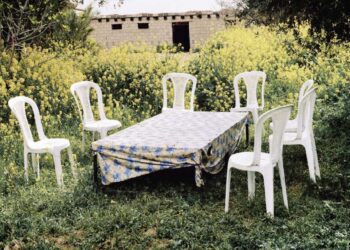“Between Banat” by Mejdulene Bernard Shomali is a book that immediately elicits the question: “Where have you been all my life?” Shomali deftly navigates the intricate landscape between the often-oversimplified notions of oppressed and liberated within the realm of queer Arab women. In this exploration, Shomali extends the concept of Queer critique of colour to encompass a Queer Arab critique, offering a fresh perspective on a crucial inquiry: how does the epistemology of queer Arab women take shape when it arises from the very lives it seeks to understand?
The book excels in shedding light on the multifaceted possibilities of centring Queer Arab women’s sexualities and bodies as the focal point of theoretical discourse originating from the Global South. It is difficult to undertake the construction of an exhaustive literature review on the intricate topic of Arab women’s sexualities without recognizing the presence of two interconnected hurdles. Firstly, there is a noticeable scarcity of scholarly works that specifically address this subject matter, resulting in a constrained pool of resources accessible to researchers. Secondly, a deeply rooted historical pattern has shaped the exploration of Arab women’s sexualities within a confined canon of knowledge. These biases have gradually led to the creation of a narrative, with some exceptions, that predominantly portrays Arab women as passive and devoid of sexual agency. This narrative has impeded the development of a more nuanced understanding of their diverse experiences in this realm.
“Between Banat” emerges as a valuable addition to the academic community, offering substantial benefits, especially for PhD students embarking on the arduous journey of crafting their research proposals. For writers, it provides a sophisticated and nuanced departure point that transcends the foundational aspects of Arab sexuality. In the midst of the quest for texts capable of expanding the scope of representation concerning Arab women’s sexuality, this book introduces unique and much-needed perspectives.
What sets ‘Between Banat’ apart is Shomali’s adept engagement with the queer Arab archive and literature, treating them as established entities, showcasing the author’s profound familiarity with the subject matter. Departing from much of the existing literature, which often grapples with the question of whether queerness can be attributed to ‘Arabness’ or ‘Arab women,’ Shomali astutely positions Arab women as fully realized subjects with their own sexual agency, dismantling the pervasive desexualization of Arab women. In doing so, Shomali redirects our focus, reminding us that Arab women possess a sexuality that extends far beyond being objects of desire for Arab men; indeed, they also share desires and experience sexuality with one another.
Shomali introduces Orientalism and anti-Arab racism, illustrating how they centralize Arab men in queer narratives, driven by a blend of Orientalist fascination and reinforcement of normative gender dynamics. The author adeptly highlights how fantasies of male homoeroticism perpetuate Orientalism, portraying Arab men as objects of both fear and desire and emphasizing the influence of heteropatriarchy and Orientalism in shaping these representations. Shomali’s insightful analysis delves into the discrepancy in the extensive study of Arab gay men compared to lesbian women. The researcher skillfully dissects the complex landscape of gendered queer Arab representation in relation to Western epistemology about Arab bodies.
Additionally, the book can also be read as an ode to all Queer Arab women organizing and production of knowledge resulting in the possibility of integration of various lesbian productions of knowledge into the stream of epistemological consciousness. Thus opening a new dimension for engaging with archival, academic, and literary artifacts about Queer Arab women.
This book is highly recommended for anyone interested in SWANA sexuality, Queer sexualities, and the SWANA Region, especially within the context of feminist and queer knowledge production. Whether you specialize in sexuality studies, gender studies, feminist studies, Middle East studies, or if you work on the SWANA region or on sexuality from the Global South at large, “Between Banat” is a must-read that will undoubtedly enrich your academic perspective.








